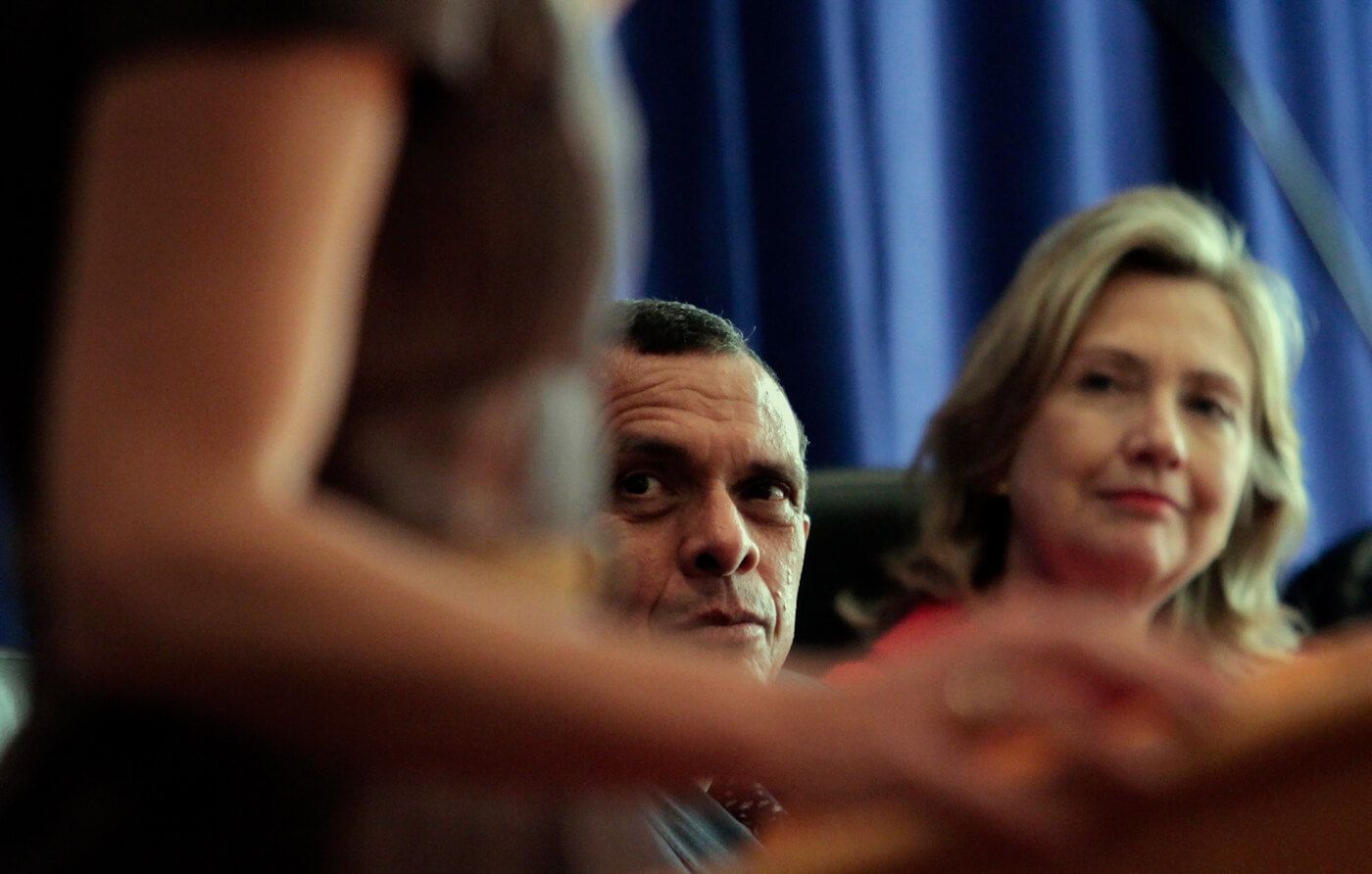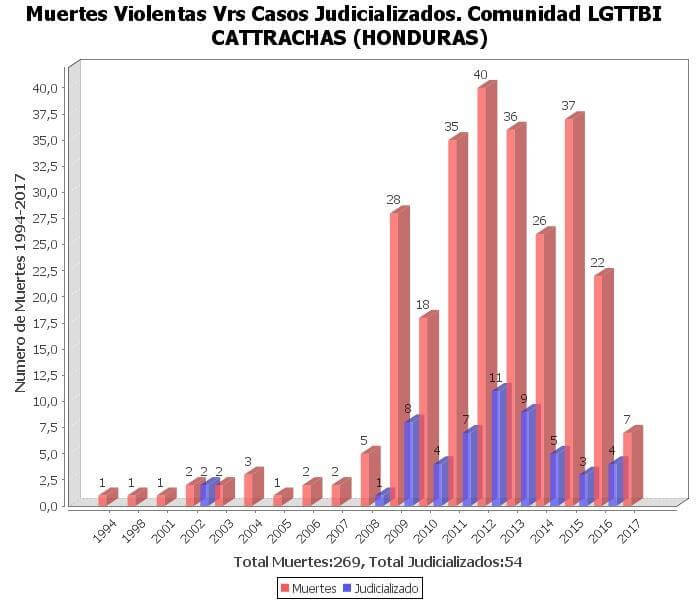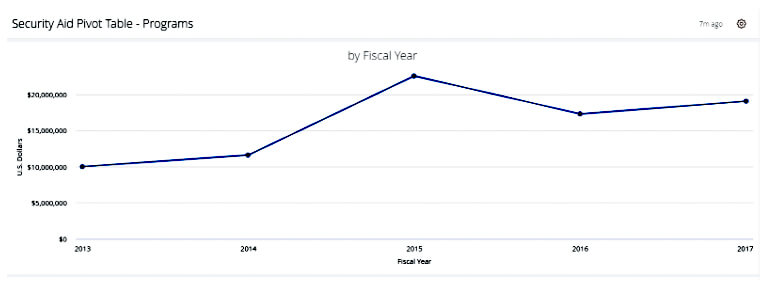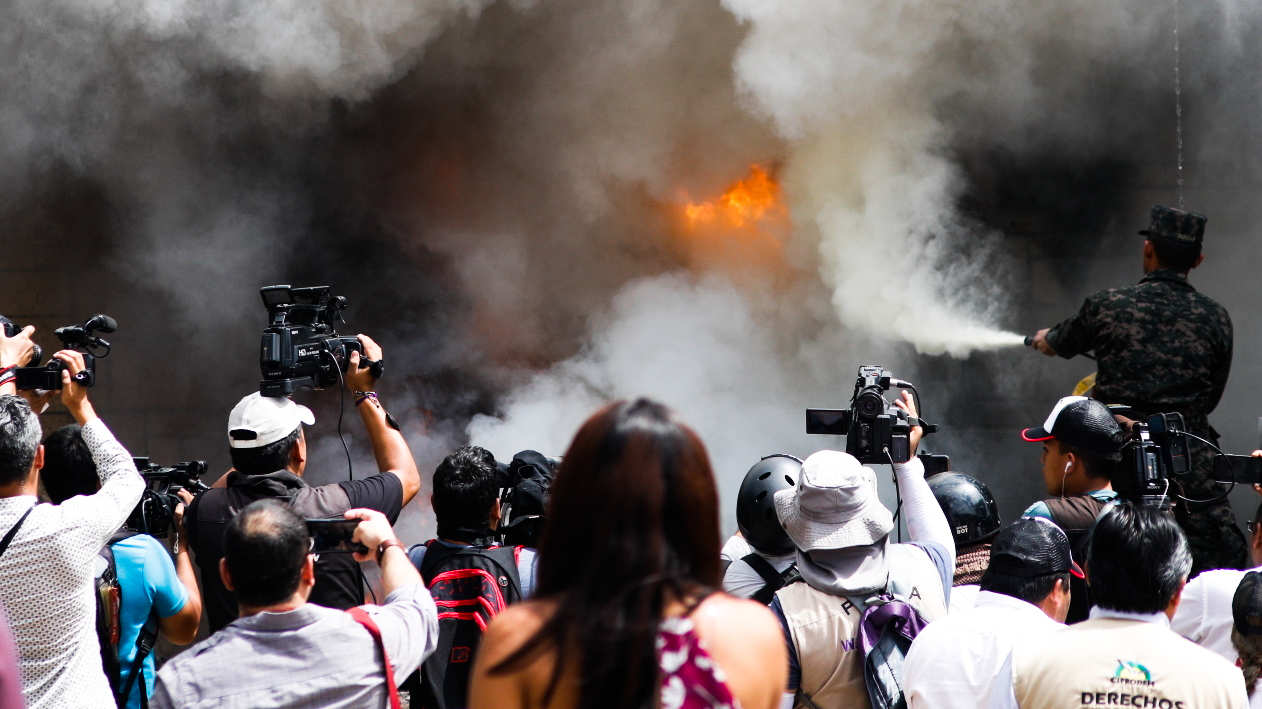Grayzone — The streets of Honduras were filled with protesters and clouds of tear gas as the month of June began. The national police fanned out through the country to crush the protests with heavy-handed tactics at the direction of President Juan Orlando Hernández, the US-supported neoliberal leader who won power in elections marred by documented fraud.
As the protests peaked, fire was set to the doors of the American embassy in the capital, Tegucigalpa, in an apparent act of retribution against the United States for its role in propping up the widely unpopular president. It was a striking act of symbolic resistance that recalled events in 1988 when Hondurans burned the vehicles of US embassy personnel to protest Washington’s dirty war against Nicaragua. The fortifications installed around the US embassy after that incident may have prevented the latest burning from consuming the rest of the building.
Ten years ago, the democratically elected center-left Honduran President, Manuel Zelaya, was whisked away from his residence in a brazen military raid supported by the United States. Zelaya’s removal cleared the path for the interests of big business across the country. As the ten year anniversary of the U.S.-supported coup approaches, Hondurans are rising up against neoliberal austerity measures imposed by Washington and the International Monetary Fund (IMF) that have triggered mass public sector layoffs and raised prices on basic goods.
Following mass demonstrations on Friday, May 31 which were especially sizable in the capital of Tegucigalpa, The Grayzone spoke by phone with Gerardo Torres, Secretary of International Affairs for the Liberty and Refoundation Party (LIBRE), the new party to which Zelaya now belongs.
“Yesterday and today we declared a national strike, which was successful. The estimate is that there were over a hundred demonstrations in Honduras in the last two days,” he said.
Throughout the month of May, healthcare workers and educators organized widespread demonstrations against decrees by Hernández that put their livelihoods in immediate jeopardy. Honduran citizens have followed these public sector workers into the streets, infuriated by IMF loans that required the government increase electricity costs while slashing healthcare and education. Anger about the abuses of foreign mining companies was also a major factor in the protest grievances.
“Honduran people went out in the streets. And not only the health workers and teachers, but all of the workers and political organizations and people that are fighting against mining companies; the people that are fighting for land and for the defense of their territories; for their natural resources – we all got together with the teachers and the health workers,” LIBRE’s Torres explained. “We have been in a struggle for more than a month. In recent days, the demonstrations have increased.”
Right now, Honduran police are repressing a protest & road blockade in southeastern Danli while today, they repressed protest at El Salvador-Honduras border (see video). There was also a march in Tegucigalpa today #Honduras pic.twitter.com/nL9oJZRgpj
— Honduras Solidarity (@hondurassol) June 12, 2019
In early May, the IMF and the Honduran government reached a “staff-level” agreement on a USD $311 million loan, meaning that it still requires approval from the IMF executive board. According to the IMF, the agreement “reforms” the public electricity company, Empresa Nacional de Energía Eléctrica (ENEE). Energy distribution was privatized in 2014 and sold off to the highest bidder: the Honduran Commercial Finance Bank. It isn’t clear what reforms the new IMF deal will bring on.
Torres said that “the IMF is demanding that education and healthcare – the public system – should pass to the control of intervention boards that would oversee and manage a change to the system. The problem is that those agreements that the government has already signed allowed them to fire many people.”
“A key objective of the economic program is to maintain macroeconomic stability, while enacting economic and institutional reforms to foster inclusive growth. Policies will build on previous achievements to strengthen the policy and institutional framework,” the IMF says.
By touting its “previous achievements” in Honduras, the IMF has signaled how out of tune it is with the country’s poor and working class, who have experienced no such gains in their own livelihoods. While the IMF’s “macroeconomic” agenda has fostered economic growth, it has been anything but inclusive; restricted to country’s elite and the drug cartels they work with. The conditions faced by the poor majority have only worsened.
Negotiating a neoliberal nightmare
While the measures that would be imposed under the new IMF deal remain unknown, the effects of neoliberalization on Honduras’s health and education sectors have brought economic punishment down on the country’s workers.
The government’s spending on education, nearly a third of the overall budget one year after the coup, has been slashed to less than a fifth, according to Honduran economist Hugo Noé Pino. Healthcare spending was slashed by 20 percent, meanwhile. “
Honduras has the highest poverty rate in the continental Americas: 65.7%, by the last available official government count in 2016, with a staggering 42.5% of the entire population classified as living in extreme poverty.
The harshest austerity measures were meted out by Juan Orlando Hernandez, a US-friendly politicians whose election in 2013 violated the Honduran constitution and was marred by fraud. Following his first year in office, Hernández oversaw the layoffs of 2,000 employees of the government-owned electric company known as ENEE. Thousands of sanitation and public telecommunications workers have also been let go under the government of Hernández.
Meanwhile, repeated fuel price hikes since 2012 have devastated the working class and sparked popular resentment.
Corruption has gone hand-in-hand with the austerity measures, and are now described simply as Honduras’s “Operating System.” Massive protests in 2015 followed the revelation that Hernández’s allies had gutted the Honduran Institute for Social Security (IHSS), stealing healthcare funds to finance electoral campaign and defrauding the public through selling wildly overpriced placebos to the IHSS for vast profits.
While protesters demanded an anti-corruption body akin to the then-robust United Nations-led CICIG in neighboring Guatemala, they were instead handed a toothless anti-fraud mission called MACCIH.
Anthropologist Adrienne Pine, an Associate Professor at American University who has lived in Honduras and written extensively on the country, told The Grayzone, “The MACCIH is frankly something of a laughingstock in Honduras, seen as a technocratic tool of the U.S. government to legitimize the Hernández regime. It has pursued mostly small, safe targets in cases that do little to threaten the current structures of power put in place through the U.S.-supported 2009 coup.”
“But when the biggest example of corruption imaginable — the blatant theft of the country’s election — happened on its watch in 2017, the MACCIH remained silent,” Pine said. “And when you have violently anti-democratic policies like IMF-led efforts to privatize healthcare and education overriding the will of the Honduran people, that doesn’t fit within the MACCIH’s narrow definition of ‘corruption’ either.”
Back in 2014, a paper from the Washington-based Center for Economic and Policy Research (CEPR) think tank on a $189 million IMF loan noted that the poor would bear the brunt of the economic shock therapy. Five years later, with this prediction confirmed, Hernández is pushing for more austerity in the name of “reform.”
As Torres explained, “We have seen in the Hernández government how he has destroyed all of our public services with the intention to transfer those public services to private hands in a neoliberal strategy that we all know very well: you destroy the public institutions and then you say that there is no other way to save it unless it’s passed to the private sector.”
Designing a de facto dictatorship
When he was elected president of Honduras in 2009, Manuel Zelaya struck a less radical posture than those of most of his progressive counterparts across Latin America. He brought a minimum wage to the country and instituted some much-needed economic reforms.
It was only after he signed cooperation agreements with Venezuela through the PetroCaribe economic alliance and began to work towards resolutions on land disputes between poor and indigenous populations that multinational corporations, government insiders and U.S.-backed civil society groups began to turn up the heat.
In the lead-up to the coup, CIA cutouts like the National Endowment for Democracy (NED) and United States Agency for International Development (USAID) were pumping $50 million a year into Honduras for “democracy promotion.” US-backed civil society groups like the Honduran Council of Private Enterprise and the Center for International Private Enterprise focused on driving a wedge between big business and Zelaya.
By June 2009, the coup plotters were confident enough to make their move. The night before they came for Zelaya, they met with a high-ranking U.S. military official. The Defense Department was reportedly concerned that Zelaya’s presidency gave Venezuela’s then-President Hugo Chavez increasing influence in the country.
In an early morning military operation, Zelaya was rushed onto a plane bound for Costa Rica. The plane took a pit stop at the U.S.’s Soto Cano air base, known locally as Palmerola. Zelaya described the operation as a kidnapping upon landing in Costa Rica.
A little less than a month later, the U.S. embassy in Honduras sent a cable to the White House and a handful of higher-ups in the State Department, including Secretary Hillary Clinton. The cable, later released by WikiLeaks, declared that there was “no doubt” that the raid “constituted an illegal and unconstitutional coup.”
Describing the coup as a “kidnapping,” the embassy concluded that none of the arguments of regime change supporters had “any substantive validity under the Honduran constitution. Some are outright false.”
While Clinton’s State Department did not openly endorse the coup, it immediately defied the Organization of American States’ (OAS) unanimous demand that Zelaya immediately return as president. Clinton unilaterally circumvented the OAS, informally recognizing the business-friendly Roberto Micheletti as the democratically-elected president to be.

Hillary Clinton, right seated with Honduran President Porfirio Lobo at a 2010 Summit in New York, Sept. 22, 2010. Bebeto Matthews | AP
The negotiations took place at gunpoint once Zelaya returned to Honduras, and were designed to legitimize the coup behind democratic guise. Clinton’s long-time confidante, Lanny Davis, meanwhile, was hired by the Honduran chapter of the Business Council of Latin America to serve as the primary Beltway lobbyist for the coup. Together with Clinton, Davis consolidated a regime change narrative within Washington circles..
The post-coup elections in 2009, marked by fraud and violence, brought Porfirio “Pepe” Lobo Sosa into the office of presidency. Lobo Sosa, like the current president, was also adjacent to drug trafficking. His son, Fabio Lobo, is serving a 24-year sentence in the United States for conspiring to import cocaine into the country.
Meanwhile, Lobo Sosa’s wife, Rosa Elena de Lobo, is facing up to 80 years in jail for having pilfered nearly USD $500,000 from public coffers during his time in office. Ironically, Lobo Sosa is now callingfor his successor, Juan Orlando Hernández, to resign.
Due to austerity measures ushered in by his government and enforced through the militarization of the country, Juan Orlando Hernández quickly became a hated figure among average Hondurans. Nevertheless, he announced he would run for reelection, which is explicitly banned by the constitution. What’s more, Hernandez’s party was banking its success on a series of dirty tricks.
During the run-up to the 2017 election, The Economist obtained a two-hour recording from a “participant” in a training session held by Hernández’s National Party for party activists “manning voting tables at polling stations on election day.”
“By The Economist’s count, the session’s leader advocates at least five vote-rigging methods, couching them in banal terms such as ‘strategy’ and ‘technique,’” the magazine reported.
Hernandez’s opponent, Salvador Nasralla was five points ahead with most of the vote counted. But suddenly, election authorities stopped releasing results. Almost two days later, when the vote counting resumed, Nasralla’s lead had vanished, allowing Hernández to squeak by with a tiny margin of victory.
Election observers from the Organization for American States noted “the lack of guarantees and transparency, as well as the accumulation of irregularities, mistakes and systemic problems that have surrounded this electoral process during the pre-electoral phase, election day, and the post-electoral phase, that as a corollary do not allow the Mission to have certainty about the results.”
From an on-the-ground perspective, Torres recounted the timeline of the vote-counting process to The Grayzone: “When they had 80 percent of the votes counted we were winning by five points, and so they shut down the system 466 times until they started winning again. We went to the streets and we were on the streets for a month fighting. Then the U.S. ambassador, Heidi Fulton, appeared before the nation saying that the United States recognized Hernández as the winner. Then they provided the support of the United States military forces and they continued giving money to Hernández.”
Repressing the resistance
Protests against the apparent fraud exploded around the country. The Office of the UN High Commissioner for Human Rights foundthat at least 22 civilians were killed in the protests, and at least 16 of them were gunned down by police. 1,300 people were thrown in jail, many in military detention centers.
“We have two compañeros who are still in prison a year and a half after they were accused of burning the front door of a hotel in Tegucigalpa,” Torres noted. Edwin Espinal and Raúl Álvarez await trial in the military-run, U.S.-style maximum security “La Tolva” prison 16 months later.

Edwin Espinal, a veteran human rights defender held by the Hernandez government
“Edwin Espinal and Raúl Álvarez are political prisoners. Edwin’s case in particular is particularly egregious, as he is a well-known human rights defender who has been threatened, arbitrarily detained, and even tortured dozens of times by Honduran security forces since the coup for his work organizing for social justice causes,” Adrienne Pine told The Grayzone.
“His criminalization for standing up for human rights and democracy stands in stark contrast to the impunity enjoyed by the violent state security forces and death squads,” Pine continued. “The fact that Edwin has protective measures issued by the Inter-American Human Rights Court meant nothing to the U.S.-supported regime, which has placed him and Raúl in pre-trial detention in a prison designed for the most violent organized criminals, putting both of their lives at serious risk. Edwin has lost nearly fifty pounds and has been refused necessary medical care.”
Honduran prisons are notoriously inhumane due to poor sanitation, overcrowding, and insufficient nutritional standards. The country’s prison system is designed to accommodate 10,600 inmates, but held nearly twice that in 2018.
The UN High Commissioner’s Office cites “credible and consistent testimonies” that those detained during the 2017 electoral crisis were subjected to abuse in some cases constituting torture and that the police had fired upon protesters indiscriminately. The same report also found that during the protests, at least six journalists were attacked by police and broadcasts that criticized the government were shut down.
Attacks on the press during the post-electoral crisis were just the tip of the iceberg, however. Even the Ministry of Justice and Human Rights of Honduras, itself a part of the government, documented the murder of 25 journalists between 2014 and 2016 while Hernández was in power. In 2016 the body also registered 16 violent attacks on lawyers, in which 13 were killed.
Since the 2009 coup, according to the human rights organization, Cattrachas, more than 300 LGTTBI (Lesbian, Gay, Trans, Travesti, Bisexual and Intersex) Hondurans have been killed. The numbers represent a dramatic increase in violent hate crimes against the community compared with previous periods.
The below graph shows the number of violent murders against members of the LGTTBI community per year (in red), compared with the number of cases for which anyone has been charged with the crime.

And in 2019 alone, prior to the current uprising, the UN Human Rights Office “received 51 complaints about murders of human rights defenders in the country, of which at least 21 have been verified by UN Human Rights Office.”
A new criminal code to go into effect in November, published on May 10, lays bare the prosecutorial priorities of the Honduran government. For one, the law reduces the maximum prison sentence for aggravated drug trafficking by five years. Some new penalties introduced under the law bring prison sentences as low as four years for trafficking crimes. It also opens up the door for traffickers who cooperate with investigations by authorities.
The legal reforms were proposed in the wake of the 2018 arrest of President Hernández’s brother, Juan Antonio Hernández, in Miami on drug trafficking charges. According to LIBRE’s Torres, the US has looked the other way while the Hernández government has done the bidding of powerful local drug cartels.
“The United States knew in 2017 that Juan Orlando Hernandez was being investigated over participation with drug cartels and still supported him and allowed him to forcefully stay in power with an illegal reelection, and without winning,” he said.
Meanwhile, journalists and publishers face fresh risks under the new criminal code, including “crimes against honor” and “crimes against morality.” Defamation and slander may now come with increased prison sentences, including more than a year behind bars.
Prison sentences for women who get abortions and doctors who perform them will increase to up to six and 10 years, respectively.
Participation in “illicit meetings and protests” will also be punishable by up to four years in prison, while protest leaders and financiers could face 15 years.
These draconian measures have been met with virtual silence from Washington and little coverage in a corporate US media that served as a megaphone for Nicaragua’s right-wing opposition when it launched a coup in April 2018.
“The hypocrisy is really obvious,” Torres said. “Nicaragua is just beside Honduras. We are neighbors. And it’s interesting how in two countries that are so close, that are in the same region, the U.S. has such different policies.”
The contradiction in treatment between Honduras and Nicaragua can be easily understood in terms of US military interests. Just over 50 miles from Tegucigalpa is the Palmerola Soto Cano military base, where the US army has free reign.
Hernández supported US threats against Venezuela, acceded to Trump’s call to move the Honduran Embassy from Tel Aviv to Jerusalem in violation of international law, and agreed to surges in US troops in the country’s Northern Territory to have more control in the Caribbean and Central America.
“Even though the DEA has some investigation into Hernández it is clear that the U.S. Southern Command wants Hernández in power,” Torres explained.

The US gave more than $80 million in military assistance to the Hernández government between 2013 and 2017 according to the Security Assistance Monitor
Taking aim at the fountainhead
On Friday, tires were set on fire in the doorway of the U.S. embassy in Tegucigalpa. The Associated Press reported that it wasn’t clear why those who set fire to tires at the embassy’s doorstep “weren’t stopped by guards outside the embassy.”
While the uprising has been largely peaceful, acts of property destruction have occurred. Protest leader and head of the Honduran Medical Association Dr. Suyapa Figueroa, blamed “infiltrators from this country’s dictatorial government.”
In response to a tweet Friday by reporter Gilda Silvestrucci noting that 20 minutes has passed since a group of masked individuals set and there were no police officers or firefighters to be seen, the Black Fraternal Organization of Honduras, OFRANEH, responded“what a coincidence [that this would happen in] one of the most surveilled and protected locations in Honduras…”
Earlier in the day, a National Police truck was seen transporting tires.
Manifestantes queman sede de la Embajada de Estados Unidos en Tegucigalpa, #Honduras, como protesta del apoyo de Donald Trump al Gobierno corrupto de Juan Orlando Hernández.
Como no es #Venezuela los medios CALLAN el hecho. @antonioguterres @mbachelet@ONU_es @Pontifex_es @UN pic.twitter.com/yuuK4KU7Rb— Javier Alexander Roa (@RoaJavier) May 31, 2019
Adrienne Pine, the anthropologist at American University, noted, “The similarities between false flag operation that took place at the Tegucigalpa Marriott and the embassy fire are obvious. In the former instance, police uncharacteristically disappeared from the scene. Numerous infiltrators from the National Party were clearly identified and recorded inciting and participating in violence; yet only longtime human rights defenders were criminalized and are being held as political prisoners.”
Pine continued: “The same thing happened last Friday–you see the unprecedented absence of security forces at the U.S. embassy just before a group of heavily disguised individuals set the fire, and the immediate targeting of social justice activists, despite a similar lack of evidence that they played any role in the vandalism.”
While the fire very well may have been an act of sabotage by an agent provocateur, it could have also been the result of the pent-up anger of the Honduran population at the United States for its role in the coup and dictatorship that followed. Bystanders at the scene chanted, “American trash, American trash” as the fire burned.
Since May 24, the embassy had issued three “security alerts” and two “demonstration alerts.”
It also issued a statement condemning the arson, which read: “The acts of violence that took place today at the U.S. Embassy in Honduras are unacceptable. We are working closely with the Honduran authorities to bring those responsible to justice.”
A week later, protest leaders refused a government offer for dialogue, vowing only to engage in talks once the government’s IMF-backed scheme targeting the healthcare and education sectors are withdrawn.
A few days later, activists announced that social security workers from the IHSS would join the struggle.
Though the protests were triggered by the latest round of privatization measures, Hondurans are also lashing out against the outside powers that imposed these policies. “The action against the U.S. embassy is something that has been, historically, prepared in the mind of the people,” Torres told The Grayzone.
“People are aware that the United States embassy is the only reason why Juan Orlando Hernández is still the president of Honduras.”
Feature photo | A Honduran soldier with an extinguisher attempts to put out a fire outside the main entrance into the U.S. Embassy during a protest against the government of President Juan Orlando Hernandez, in Tegucigalpa, Honduras, May 31, 2019. Elmer Martinez | AP
Alexander Rubinstein is a staff writer for MintPress News based in Washington, DC, covering foreign policy, police, prisons, and protests. Follow him on Twitter at @RealAlexRubi.
Source | Grayzone
The post Why Protesters Set Fire to the US Embassy in Honduras appeared first on MintPress News.
